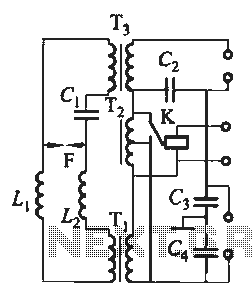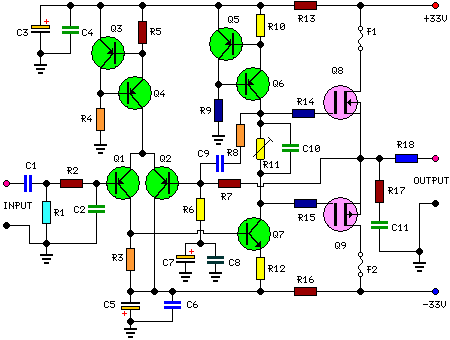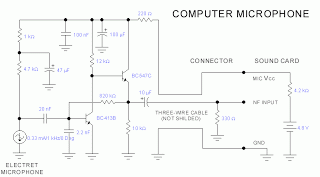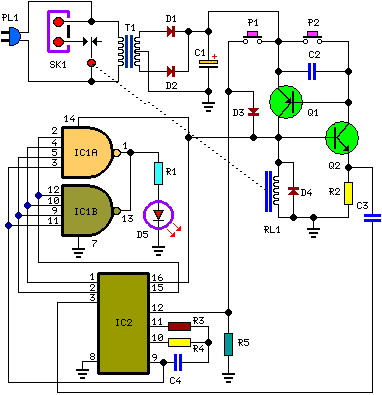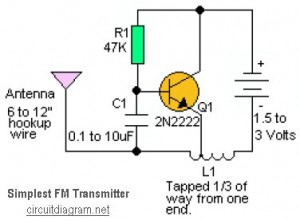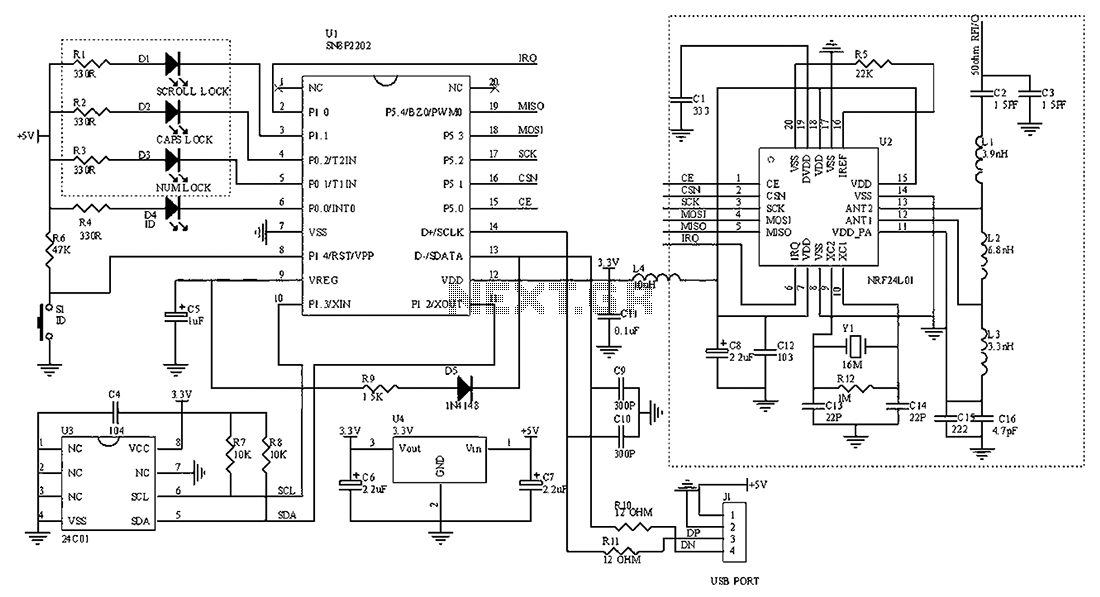
General-Purpose Output Amplifier Circuit
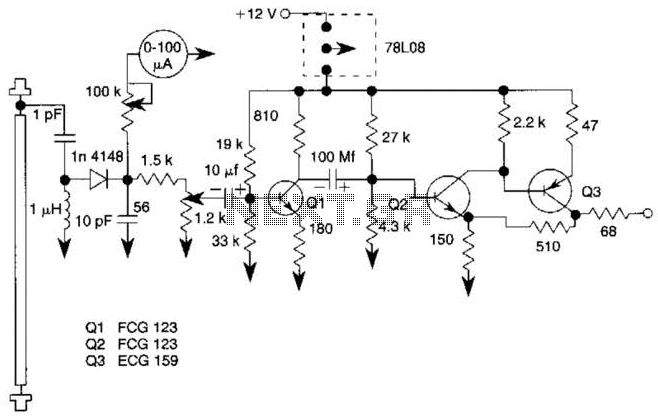
This general-purpose amplifier has a bandwidth of approximately 20 MHz and it uses an LM733/NE592 video amplifier integrated circuit. This circuit can be utilized as a line driver or as a LAN line driver.
The circuit employs the LM733/NE592 video amplifier IC, which is specifically designed for high-speed applications and offers excellent performance characteristics for signal amplification. With a bandwidth of approximately 20 MHz, this amplifier is capable of handling a wide range of frequencies, making it suitable for various applications in both analog and digital systems.
The configuration of the amplifier allows it to function effectively as a line driver, which is essential for transmitting signals over long distances without significant degradation. This is particularly important in communication systems where signal integrity is paramount. As a LAN line driver, the circuit can facilitate data transmission within local area networks, ensuring reliable communication between devices.
The design includes appropriate biasing and feedback mechanisms to stabilize the amplifier's performance and minimize distortion. The input stage is configured to accept a variety of signal types, while the output stage is capable of driving loads with minimal loss. Capacitors may be used for coupling and bypassing to enhance frequency response and prevent unwanted oscillations.
Overall, this general-purpose amplifier circuit is versatile and can be adapted for various applications, providing robust signal amplification capabilities suitable for both commercial and industrial use. This general-purpose amplifier has a bandwidth of approximately 20 MHz arid it uses an LM733/NE592 video amp IC. This circuit can be used as a line driver or as a LAN line driver. 🔗 External reference
The circuit employs the LM733/NE592 video amplifier IC, which is specifically designed for high-speed applications and offers excellent performance characteristics for signal amplification. With a bandwidth of approximately 20 MHz, this amplifier is capable of handling a wide range of frequencies, making it suitable for various applications in both analog and digital systems.
The configuration of the amplifier allows it to function effectively as a line driver, which is essential for transmitting signals over long distances without significant degradation. This is particularly important in communication systems where signal integrity is paramount. As a LAN line driver, the circuit can facilitate data transmission within local area networks, ensuring reliable communication between devices.
The design includes appropriate biasing and feedback mechanisms to stabilize the amplifier's performance and minimize distortion. The input stage is configured to accept a variety of signal types, while the output stage is capable of driving loads with minimal loss. Capacitors may be used for coupling and bypassing to enhance frequency response and prevent unwanted oscillations.
Overall, this general-purpose amplifier circuit is versatile and can be adapted for various applications, providing robust signal amplification capabilities suitable for both commercial and industrial use. This general-purpose amplifier has a bandwidth of approximately 20 MHz arid it uses an LM733/NE592 video amp IC. This circuit can be used as a line driver or as a LAN line driver. 🔗 External reference
Warning: include(partials/cookie-banner.php): Failed to open stream: Permission denied in /var/www/html/nextgr/view-circuit.php on line 713
Warning: include(): Failed opening 'partials/cookie-banner.php' for inclusion (include_path='.:/usr/share/php') in /var/www/html/nextgr/view-circuit.php on line 713
